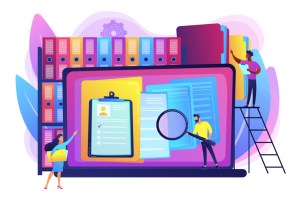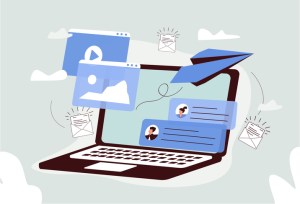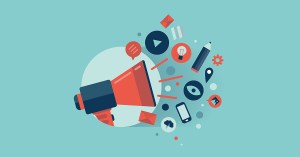The Differences Between CTAs in B2B and B2C Marketing
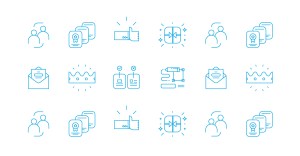


This article will explore how CTAs differ for the two types of businesses, and how to create CTAs that improve click-through rates.
Kathleen Garvin
Messaging in marketing is deliberate. We use certain language to tell stories and engage current and potential customers. And, yes, make a sale every now and then.
A landing page, which is also known as a lead-capture or destination page, is used to generate leads or make a sale. The goal is to nurture or warm up consumers who may be on the fence about making a purchase. Depending on where they are in the sales funnel, they could be at the top (these leads are in the very early stages and are generally only looking for information) or near the bottom (just about ready to buy). A landing page serves to entice the person or company on the other end to go with your product or service.
Now, a good landing page is nothing without action. A call to action (CTA) is copy that compels someone to click. Have you ever read something that sucked you in and drove you to subscribe to a newsletter, download a free ebook, or hit the purchase button? (Bonus points if it wasn’t from an influencer or well-known brand, where it can be less about the CTA and more about the reputation of the seller.) That’s the power of a solid CTA.
There’s a lot of psychology behind call-to-action text. Do you say “we,” “you,” or “me?” Should CTAs be different for business-to-business (B2B) and business-to-consumer (B2C) marketers? This article will explore how CTAs differ for the two types of businesses, and how to create CTAs that improve click-through rates.
The Differences Between CTAs in B2B and B2C Marketing
B2B and B2C businesses communicate differently because they have separate target audiences: other businesses versus consumers. While some of the marketing methods are the same, the steps and decision-makers are not. Let’s take a look.
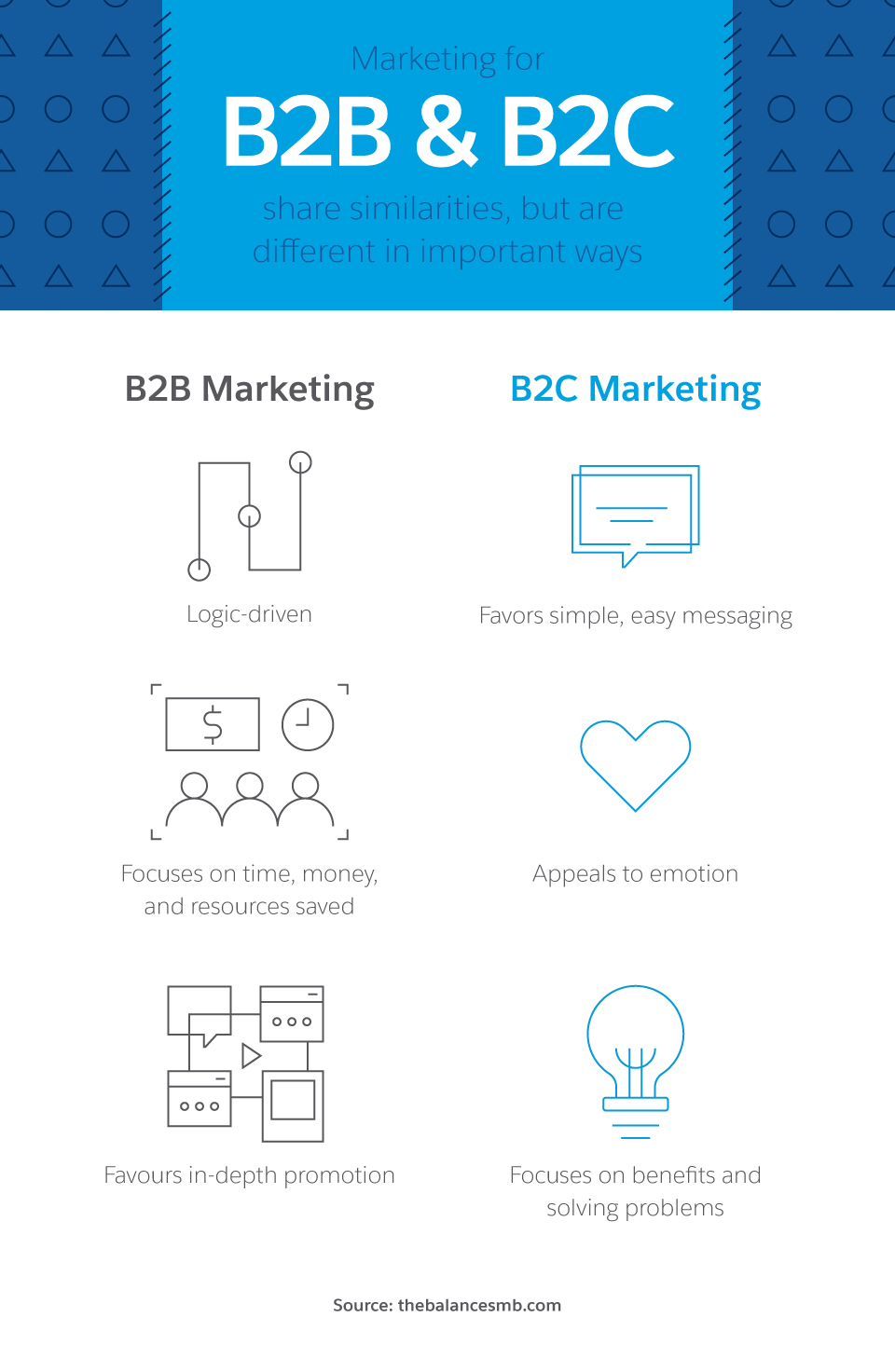
CTAs in B2B Marketing
A B2B sales cycle tends to have more communications and take a longer amount of time. This is because there are usually different stages of communication, where the figurative baton is passed from one team member to another to make a decision. For example, your social media marketing specialist may interact with a company representative on your LinkedIn page; they receive the lead’s email address, and the email marketer at your company is now working that lead in another part of the funnel. As the lead progresses through the funnel, they transition from a marketing qualified lead (MQL) to a sales qualified lead (SQL), and at this point a member of your sales team may hop on an introductory call. Then the salesperson starts the contact on bottom-of-the-funnel (BoFu) sales materials.
To develop trust and value, a B2B company can use white papers, case studies, and virtual or in-person demos over a period of time to connect with leads. An example of a CTA on a B2B website could be 30-day free trial of a software. B2B sales can often have longer customer journeys and may be a big investment and undertaking for a company, so the consideration is often huge. B2B communications are usually a slow burn building up to a sale.
For higher B2B conversion rates, experts recommend:
- Keep the wording short and to the point
- Don’t be bossy. Try to avoid words such as “submit,” “send,” or “click here”
- Convey value
- Make the CTA obvious
- Indicate urgency
- Test multiple CTAs. The wording may need to change depending on your audience (owners of small businesses versus executives at large corporations, for example)
These tips overlap with CTAs for B2C marketing, but there are key differences to be mindful of.
CTAs in B2C Marketing
A B2C sales cycle, on the other hand, usually has fewer steps in the process and fewer decision-makers per sale. Marketers in this group tend to focus on messages that elicit an emotional response, rather than a competitive one, from potential customers. Similar to B2B marketing, B2C CTAs and landing pages should educate leads on the perks and value of buying a service or product. This messaging for a B2C audience tends to be more to the point, however, and many B2C companies advertise to a person with direct buying power.
To develop trust and value, a B2C company may use blog posts, ebooks, or a free email course over a period of time to connect with consumers. An example of a CTA on a B2C website could be an offer for free shipping for a new customer who makes their first purchase.
6 Tips for Crafting CTAs in B2B and B2C Marketing
Use these six tips when creating CTAs for your marketing and sales copy, regardless of the type of business.
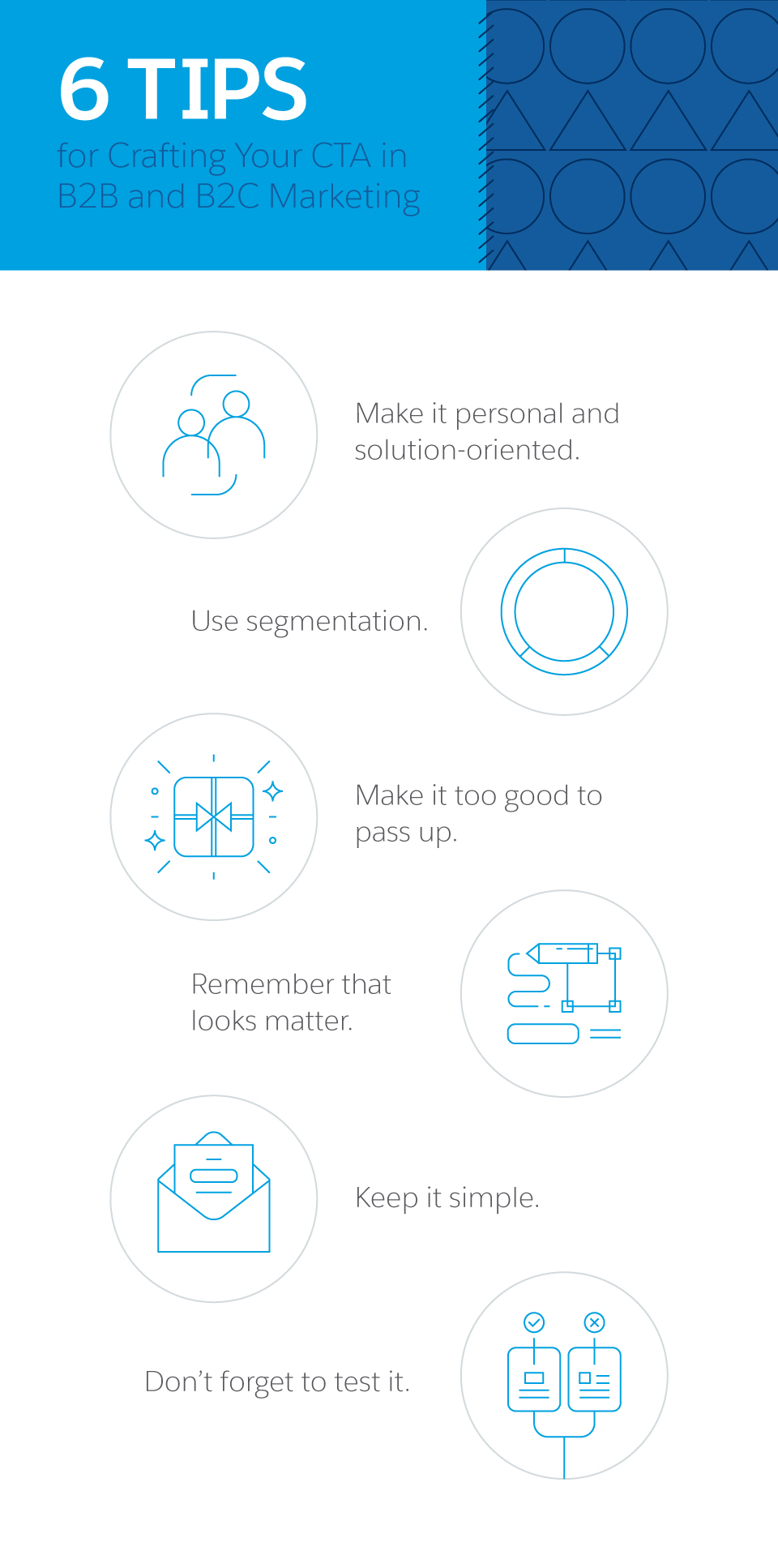
1. Make It Personal and Solution-Oriented
When creating copy, lean into “you” over “I” and “we.” It’s important to act like you’re speaking directly to your customers in your copy. After all, they’re looking to buy a product or service to help themselves, not to help you make money.
You can still tout your features and benefits, but be people-centered in your communications and drive home what they get out of the deal by choosing you. Remember to focus on the solution, not the sale. Regarding the person or company on the other end:
- What’s their pain point?
- What problem are they trying to solve?
- What need are they trying to fulfill?
Make it all about them: Demonstrate how X product will make their lives easier or that Y recommended service will help them finish their task quicker.
2. Use Segmented Emails
Divide your current customers and prospects so your emails are intentional and personalized. For example, you wouldn’t send a prospective user an email intended to upsell them or repurchase something if they’ve never bought anything from you in the first place. But don’t stop there: The more you segment, the more personalized your messaging becomes. Get and use data on existing users’ interaction and shopping history so you can send tailored messages. It’s more work but pays big dividends.
3. Make It Too Good to Pass Up
Phrases such as “Act now!” and “For a limited time only” create a sense of urgency and scarcity. This type of language can help a waffling consumer commit to your offer; after all, they don’t want to be the ones to miss out. “Instant,” “fast,” and “hurry” are all examples of words that cause people to think about time.
With that said, don’t overdo it. Depending on your business, you’ll want to use these types of phrases sparingly in your copy. If every message behind your offer is “going-going-gone!” you risk burning out your target customer.
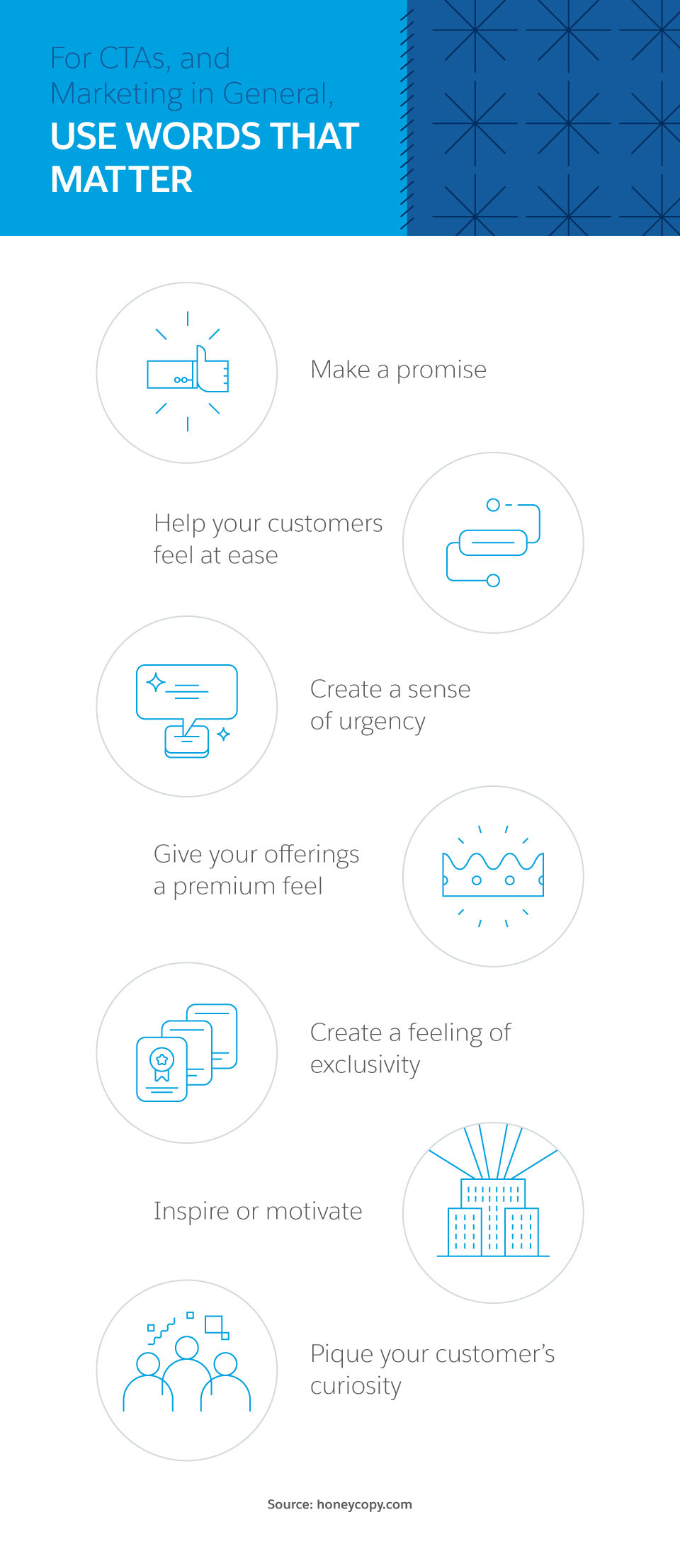
4. Remember that Looks Matter
When designing content with a CTA, you may be tempted to lean in to your company colors. While you definitely want to look on-brand, the colors, along with the size and shape of your CTA button make a difference. For instance, yellow and orange are attention-grabbing, while navy blue and teal have been shown to attract shoppers on a budget. When it comes to shapes, aim for a rectangle with rounded corners (our brains generally don’t like pointy things) and make it big and easy to spot.
Also, keep the CTA in a spot where readers will actually see it. Above the fold or throughout the page is usually best. In addition to placement, make sure it doesn’t clash with or fade into the background.
5. KISS: Keep It Simple, Stupid
That old adage works in marketing: While relevant images and body copy are important for your marketing, keep it simple. You don’t want to make your page look busy. Too many supplemental images and text can have the opposite effect and make someone bounce off the page without clicking on your offer.
Your CTA should be short and sweet and to the point — ideally, between two and five words. Before you hit publish, see if there’s any text you can trim to make the offer as clear and tempting as possible.
6. Don’t Forget to Test It
Once you have a well-designed landing page and perfectly worded CTA, it’s time to celebrate — sort of. Create different variations and test them. Using automated A/B testing, you can see which combination is most effective. A simple tweak like a different button color might be all you need to lock in a winner.
Your CTAs: A Basic Element with Big Impact
The key to writing and creating a call to action that converts is time. Take the time to research your audiences, test your options, and gather data that helps you decide the copy, design, color, and placement of your CTAs. With dedication, you’ll find the best combinations that drive leads and customers to take you up on your offer.
Share “The Differences Between CTAs in B2B and B2C Marketing ” On Your Site














